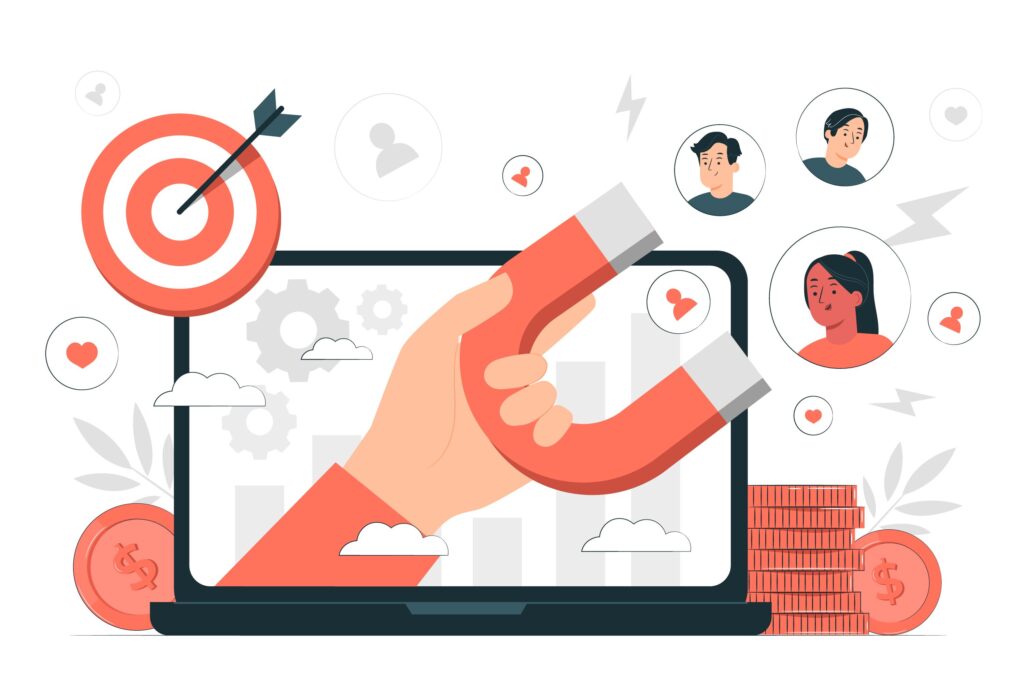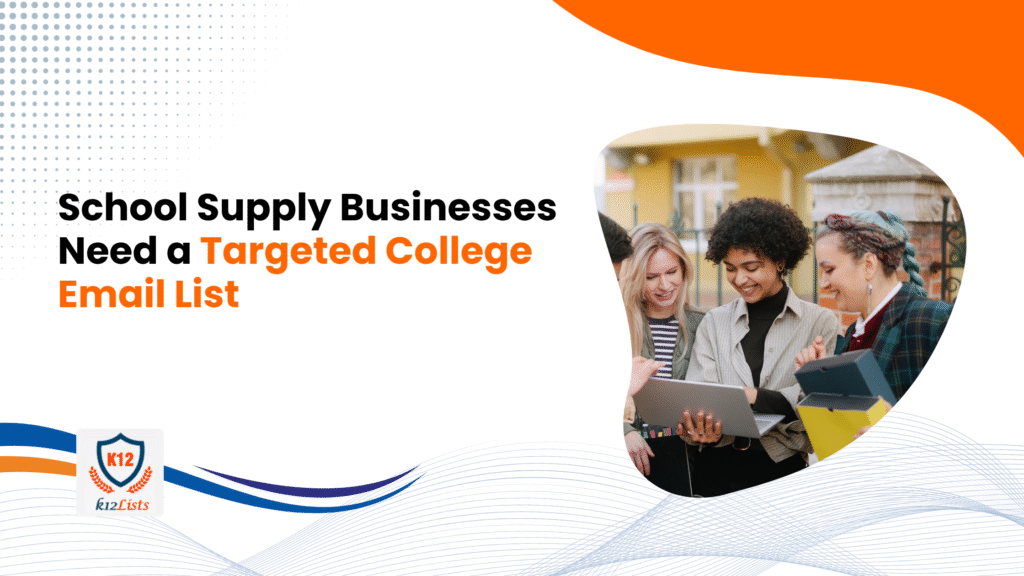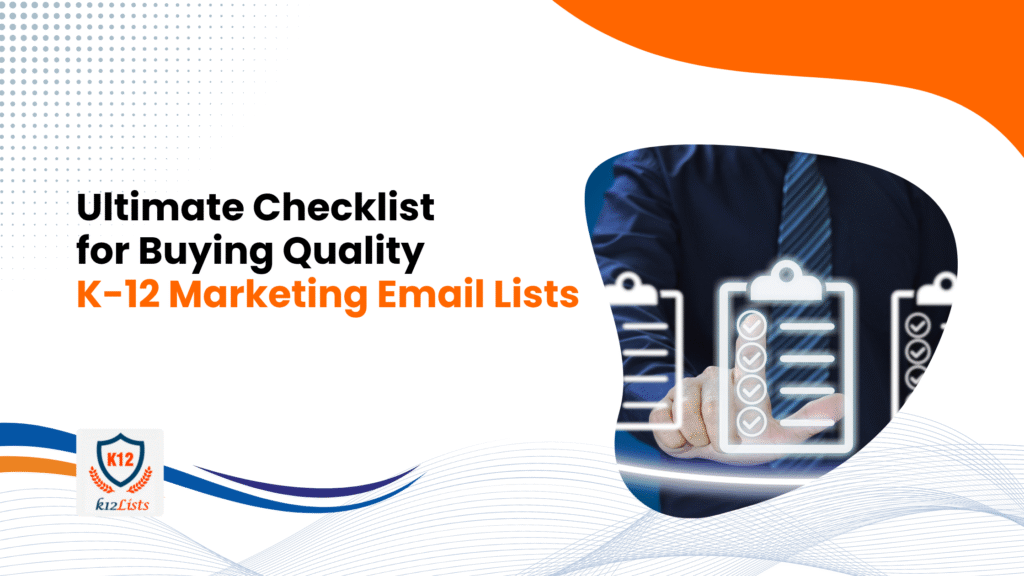In the competitive education sector, converting K12 contacts into paying customers requires more than just a long list of school administrators or educators. It demands strategy, insight, and a personalized approach. Whether you’re marketing EdTech solutions, classroom supplies, or curriculum programs, understanding how to nurture K12 prospects through your sales funnel can lead to long-term, recurring business.
In this guide, we’ll walk you through actionable strategies to transform your K12 email list into a revenue-generating asset, focusing on six critical areas:
- Understanding the K12 market and customer needs
- Building targeted marketing campaigns
- Leveraging data and analytics for personalized engagement
- Crafting compelling content for conversion
- Nurturing leads through the sales funnel
- Measuring and optimizing conversion rates
Let’s dive in.
1. Understand the K12 Market and Customer Needs
Before launching any campaign, it’s essential to know who you’re targeting within the K12 ecosystem. This market includes:
School Principals and Administrators – Decision-makers for school-wide purchases
IT Directors – Key for EdTech or digital tool implementation
Teachers and Curriculum Coordinators – Influencers and end users of classroom products
District-Level Officials – Oversight on budgets and policy
Each contact has unique pain points and responsibilities. For example, a district IT director is more concerned about data privacy and system integration, while a principal may focus on student outcomes and teacher satisfaction.
Actionable Tip: Segment your K12 contacts by job title, school size, region, and past interactions to tailor your approach. This segmentation will serve as the foundation for personalization and targeted outreach.
2. Build Targeted Marketing Campaigns
Once you’ve segmented your list, craft targeted marketing campaigns that address the specific needs of each group. Generic messaging won’t resonate in a market driven by academic outcomes and tight budgets.
Campaign Examples:
- Email Campaign for Curriculum Directors: Highlight how your educational tools align with Common Core standards or improve test scores.
- Webinar for Principals: “How to Boost Teacher Retention with Better Classroom Tools”
- Direct Mail for District Leaders: Include testimonials from similar-sized districts using your product successfully.
Pro Tip: Incorporate personalization tokens in emails (e.g., school name or job title) and dynamic content on landing pages based on user profiles to increase engagement.
3. Leverage Data and Analytics for Personalized Engagement
With education budgets under scrutiny, personalization isn’t optional — it’s expected. Leverage your K12 contact list data and user behavior to inform your engagement strategy.
Key Metrics to Track:
- Email open and click-through rates: Identify which messages resonate
- Form submissions: Understand what content drives conversions
- Website behavior: Monitor which pages attract K12 traffic
Example: If your analytics show that IT coordinators frequently download your cybersecurity whitepaper, consider following up with a case study or a demo invite tailored to their interests.
Tools like HubSpot, Salesforce, or Mailchimp can help automate these insights and trigger behavior-based follow-ups.
4. Craft Compelling Content for Conversion
Content is your most valuable asset when it comes to converting K12 contacts into customers. But it has to speak their language educational outcomes, teacher empowerment, and student success.
Must-Have Content Types:
- Case Studies: Show how schools improved performance with your solution
- Video Testimonials: Let satisfied educators tell your story
- ROI Calculators: Help administrators quantify benefits
- Guides and eBooks: Provide value before pitching a product
Example: An EdTech company created an eBook titled “The Future of Hybrid Classrooms” targeting tech-savvy superintendents. It led to a 38% increase in demo requests within a month.
Pro Tip: Always include a clear, actionable CTA whether it’s “Schedule a Demo,” “Download Now,” or “Start a Free Trial.”
5. Nurture Leads Through the Sales Funnel
A K12 contact who downloads your PDF today may not be ready to purchase this quarter. Nurturing is key. Use email drip campaigns, retargeting ads, and check-in calls to stay top of mind throughout the academic year.
Funnel Strategy Breakdown:
- Top of Funnel (TOFU): eBooks, blog content, webinars
- Middle of Funnel (MOFU): Product comparison sheets, feature videos, whitepapers
- Bottom of Funnel (BOFU): Demos, pricing consultations, customer references
Example: A school supplies company ran a 3-month nurture campaign featuring classroom organization tips, budget planning tools, and finally a back-to-school discount offer. This resulted in a 22% higher close rate compared to their general email blasts.
Remember: Education decision-making often involves multiple stakeholders and longer timelines, especially at the district level.
6. Measure and Optimize Conversion Rates
Once you’ve built the funnel, you need to measure what’s working and what’s not. Use conversion tracking to optimize your messaging, channels, and timing.
Key Metrics to Monitor:
- Lead-to-Customer Conversion Rate
- Cost per Lead (CPL)
- Email Click-Through Rate (CTR)
- Landing Page Conversion Rate
- Demo-to-Sale Ratio
If your email CTR is low, A/B test subject lines or send times. If demo-to-sale is weak, refine your follow-up pitch or add more social proof.
Example: An EdTech firm improved their lead-to-customer rate by 15% after shortening their demo request form and adding a “chat with a school success advisor” option.
Use tools like Google Analytics, Hotjar, and CRM reporting dashboards to gain deeper insights into user behavior and conversion bottlenecks.
Final Thoughts
Turning K12 contacts into paying customers takes careful planning and a clear strategy. It is more than just sending emails to a list. You need to understand what educators need, create content that speaks to them, make your messages feel personal, and improve your approach by using data.
When your marketing matches the unique features of the K12 market, you have a better chance of getting results. This includes knowing their budget timelines, how decisions are made in schools, and what kind of content they prefer. With the right approach, your K12 contact list can become a steady source of new customers.
Start with insight. Engage with value. Nurture with purpose. Measure everything.





